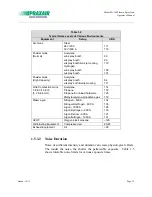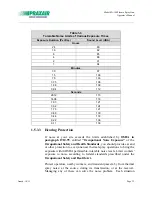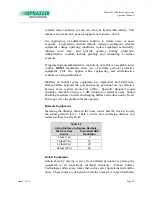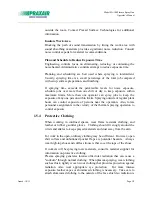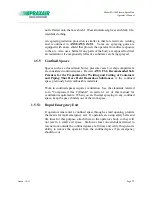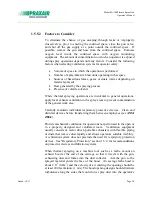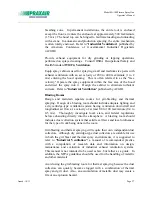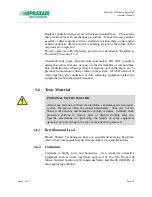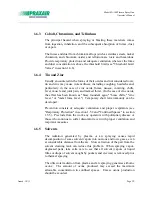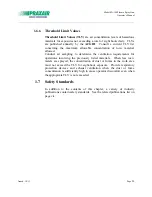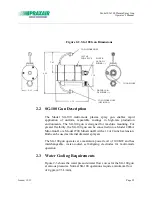
Model SG-100 Plasma Spray Gun
Operator’s
Manual
_____________________________________________________________________________________________________________________
Issued: 10/11
Page
7
Avoid contact between any ungrounded portion of the plasma or arc gun
and the spray booth or chamber. Electrically isolate plasma guns and
nozzles from support brackets to prevent stray high frequency current
from damaging other electrical equipment and controls.
1.4.6 Abrasive
Blast
Machine
Maintain and inspect abrasive blast machines according to manufacturer's
instructions. Remove and repair or replace worn parts as needed. Do not
exceed recommended air pressure in the blast tank.
Keep blast hoses as straight as possible between the blast machine and
blasting area. Sharp hose bends cause excessive friction and wear that can
lead to a blowout at those points. If hoses must be curved around an
object, use long radius curves. Store blast hoses in cool, dry areas.
Be sure blast hose controls function properly. They should require
continuous pressure on the activating lever for operation. Releasing the
lever should cause the system to shut off (dead man control).
PERSONAL INJURY
:
NEVER point a blast nozzle at a person.
Most blasting operations require respiratory protection for the operator.
Select, operate, and maintain the protective device according to
ANSI
Z88.2, Standard Practices for Respiratory Protection
, described in
section 1.5.2.
1.4.7
Handling and Manipulating Equipment
Most thermal spray and blasting applications require rotation or other
manipulation of the part being worked on. Some handling equipment can
impart high rotational speeds to parts being coated. Affix and balance
parts when necessary. Provide protection for the operator in case a
rotating part becomes airborne. Never leave operating equipment
unattended.



















